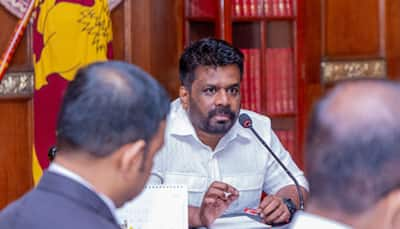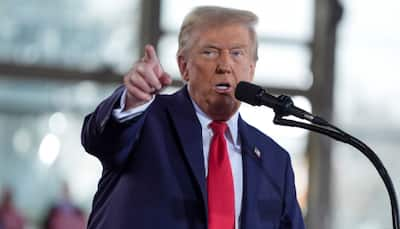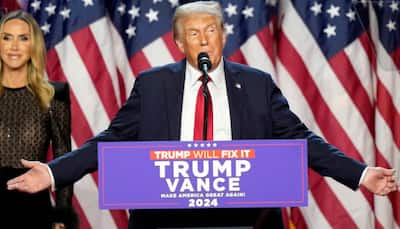As reported by The Economist, When Donald Trump won the 2016 presidential election, he was a former TV star, not yet a former president. He handled the White House transition in a way that felt like he was putting on a season of his reality show, “The Apprentice.” His approach to organizing the shift into office seemed more like producing a show than following typical government processes, emphasizing dramatic moments and high-profile decisions.
People interested in joining Trump’s cabinet (in 2016) visited Trump Tower in New York, passing by TV cameras as they entered. This selection process was lengthy and had a bit of a showbiz feel, with notable appearances from celebrities like Kanye West.
Kanye West, a well-known rapper and music producer, rose to fame in the early 2000s. He’s also recognized for his ventures in fashion and outspoken personality. Although he met with Trump in 2016, Kanye was never part of Trump’s cabinet and has held no government position.
This time around, Trump is running a more controlled process, making decisions from his Mar-a-Lago estate, away from the cameras. He’s announcing his picks more quickly, often on social media. However, the results aren’t necessarily more stable or reasonable.
Mar-a-Lago is a private estate and club in Palm Beach, Florida, owned by Donald Trump. Originally built in the 1920s, it serves as both a luxury resort and Trump’s personal residence. The property has gained attention as a place where Trump often conducts political meetings and makes public announcements.
One of the most surprising decisions happened within just 24 hours. On November 12, Trump announced that Pete Hegseth, a Fox News commentator with a background in the National Guard, would be appointed as Defense Secretary.
The National Guard is a reserve military force in the United States that operates at both the state and federal levels. Members serve part-time, usually training one weekend a month and two weeks a year, and can be called upon to assist in emergencies, such as natural disasters, or for military missions overseas.
Hegseth is one of the few who stood by Trump’s remark in 2017, saying there were “fine people on both sides” during protests over a white supremacist rally in Charlottesville, Virginia. The rally, called “Unite the Right,” was organized by white nationalist groups opposing the removal of a Confederate statue (a monument honoring leaders from the southern states that fought to keep slavery in the U.S. Civil War), sparking violent clashes with counter-protesters that led to a death and many injuries.
He is focused on the issue of “wokeness” (an awareness of social issues like inequality and discrimination) in the military but lacks any government experience.
Trump also announced that Tulsi Gabbard, a former Democrat who became a Republican and has supported conspiracy theories, would be the Director of National Intelligence. Gabbard, known for her independent views, even met with Syria’s dictator Bashar al-Assad and stated he was “not the enemy of the United States.”
According to TOI, Tulsi Gabbard, now 43, began her political career at 21 in Hawaii’s House of Representatives. She was the youngest woman elected to Hawaii’s legislature and the first Hindu member, taking her oath on the Bhagavad Gita, a sacred Hindu scripture.
Interestingly, although Tulsi Gabbard is a Hindu American, she doesn’t have Indian ancestry. She was born in American Samoa and grew up in Hawaii. Her parents are Mike Gabbard, a Hawaii State Senator, and Carol Porter Gabbard, who was born in Indiana (in the United States) and raised in Michigan.
Inspired by her mother, Carol Porter Gabbard, who was a practicing Hindu and a former member of the Hawai’i State Board of Education, Tulsi Gabbard began practicing Hinduism in her teenage years, according to Pacific Edge media. Tulsi’s father, Mike Gabbard, who was originally a Roman Catholic, also embraced Hinduism later in life, as reported.
According to The Economist, things got worse when Trump chose Matt Gaetz, a bold and attention-grabbing congressman from Florida, to be his Attorney General.
The FBI, which falls under the attorney general’s supervision, had investigated accusations that Matt Gaetz was involved in sex trafficking a minor. Although no charges were filed, Matt Gaetz was later investigated by the House Ethics Committee. He denies any wrongdoing. He is a strong supporter of Trump, and last year, he declared that if the FBI and other agencies don’t follow orders, they should be shut down or have their funding taken away.
These are all important roles where Mr. Trump felt he had been let down before. His previous attorneys-general acted too independently, not like his personal advisors. Top intelligence officials angered him by investigating his connections to Russia. His past defense secretaries and senior generals blocked his ideas.
With these choices, Mr. Trump shows that he won’t tolerate any disagreement this time. Anyone seen as disloyal or having views that don’t align with his own is not welcome.
These unusual choices may have trouble getting approved by the Senate, even with a Republican majority. Maybe that’s exactly what Mr. Trump wants.It would only take four Republican senators to reject these picks, but rejecting all three would be an unusually bold move.
The United States Senate has a total of 100 members, with each state having two senators, regardless of its population.
Trump’s other appointments, for departments where he doesn’t feel personally betrayed, are more typical and conventional.
Marco Rubio, a senator from Florida, has been chosen as Secretary of State. This would be a reassuring choice for America’s allies (countries and nations that have strong partnerships and cooperative relationships with the United States).
The Secretary of State is the U.S. government’s top official responsible for managing foreign relations, handling diplomatic matters, and representing the country in dealings with other nations.
Rubio supported a bill that made it more difficult for the president to pull the U.S. out of NATO. As the Republican Party changed, he also shifted, backing Trump’s views but keeping some of his own.
He has spoken in support of Ukraine, though he voted against the latest bill to send it weapons, saying that border security should be a priority. Mr. Rubio, the son of Cuban immigrants, has a strong anti-communist stance that is now focused on China.
An anti-communist stance means strongly opposing communism, a political system where the government controls everything. People with this view believe communism harms individual freedom and economic growth.
Other foreign-policy appointments share similar views and qualifications.
Mike Waltz, a former congressman from Florida, is set to become the National Security Adviser. Like Senator Marco Rubio, he supports the “prioritizers” (those who believe the U.S. should focus on more urgent threats, like
China, and reduce involvement elsewhere) in the MAGA movement (the political movement led by Donald Trump, standing for “Make America Great Again”), including incoming Vice President J.D. Vance. They argue that to properly address the threat from China, the U.S. should scale back its commitments to European security and its support for Ukraine.
Elise Stefanik, a congresswoman from New York, has been chosen to be the next U.S. ambassador to the United Nations, making her the sixth woman in a row to hold this role. She is known for being one of Donald Trump’s strongest supporters in Congress. Stefanik gained attention for her tough questioning of college presidents during hearings on antisemitism (hostility or prejudice against Jewish people) at universities.
So, Elise Stefanik has the right experience for a government that is cautious or doubtful about working closely with other countries through big international organizations, like the United Nations.
Then there are the more unusual appointments, for positions in departments that haven’t been created yet.
Trump revealed that he would appoint Elon Musk, the world’s richest person, to lead a new commission alongside Vivek Ramaswamy, a businessman and former Republican candidate. Their goal would be to reduce government waste and simplify regulations (or cut red tapisim).
Elon Musk has mentioned a goal he calls the “Department of Governmental Efficiency” (Doge). It’s unclear how serious he is about this idea, as he named it after Dogecoin, a cryptocurrency that started as a joke and is one of his favorites.
The plan to cut $2 trillion from federal spending, which is nearly one-third of the entire budget, is quite ambitious. However, it conflicts with Donald Trump’s promise to protect Social Security and Medicare and to avoid raising the retirement age. Elon Musk has voiced support for these massive cuts, but making them a reality would be difficult without affecting these key programs.
Even before Congress gets involved, it’s clear that this new cabinet will look very different from Donald Trump’s first one. In his first term, former Vice President Mike Pence played a key role in selecting cabinet members, many of whom were traditional Reagan-era Republicans.
They competed for power with Trump loyalists who dismissed traditional conservative values like small government, strong international alliances, and free trade.
The fight for power wasn’t always clear, and both groups had some successes. One former Trump adviser said Trump was more of a moderate in the MAGA movement. But now, the hardcore supporters are in charge.
(Girish Linganna is a Defence and Aerospace Analyst based out of Bengaluru. He is also the Director of ADD Engineering Components, India, Pvt. Ltd, a subsidiary of ADD Engineering GmbH, Germany. The views expressed in this article are of the author only.)
Stay informed on all the , real-time updates, and follow all the important headlines in and on Zee News.









